Blog Category: Mobile App Development
How to Make Your Mobile App GDPR Compliant
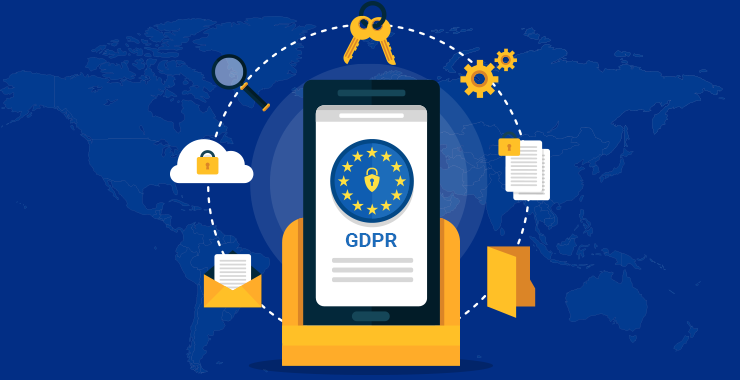
GDPR is Euro Zone’s new data protection regulations. General Data Protection Regulation or ‘GDPR’ was established on 25 May 2018 and brings how a company, application or website must protect stored and in-transit data of its Euro residents whether operating inside or outside the continent. GDPR infringements can lead to fines of up to 20 million euros or 4% of the total worldwide annual turnover of the preceding financial year, whichever is higher. British telecom conglomerate TalkTalk made quite a name for itself after European Data Protection Board (EDPB) issued it a half million fines over a data breach.
GDPR TIP#1: Don’t put your European users in the same basket as Asian and Americans
It’s not European Union officials being overly cautious; Euro residents are equally vigilant. TalkTalk lost more than 100, 000 customers in the aftermath of the breach. Unlike Americas and Asia, privacy is a big deal in Europe that some European, even American and Chinese companies use data protection and privacy as a selling for their digital products. A hefty fine for GDPR non-compliance will gather a lot of bad press, which for many years will negatively influence decision of potential customers researching their options.
The Expected Virtue of Ignorance is Hefty Fines
EDPB won’t take your ignorance as excuse if you come under the scanner. When Vanson Bourne surveyed 1,600 organizations, it found that 37% of respondents don’t know whether their organization needs to comply with GDPR, while 28% believe they don’t need to comply at all. GDPR has the potential to make your firm file for liquidation to pay up the fines or from operating in the zone. Europe is a key market and preparing for GDPR compliance is barely an impossible task.
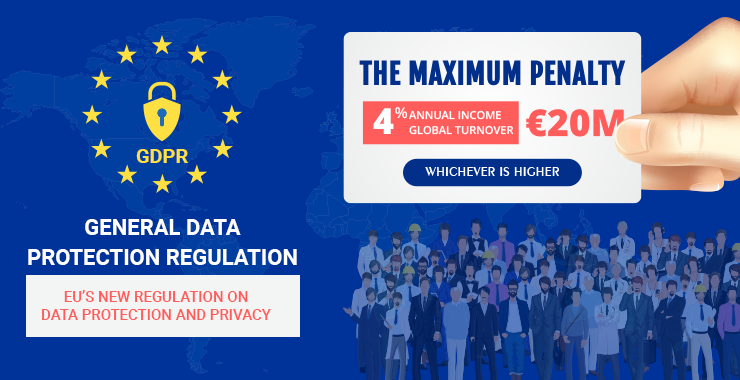
GDPR TIP #2: Stop thinking you’ll get away with penalties by playing dumb.
EDPB might slap you an even higher fine because you made a dumb person sit in charge of your user data’s privacy, not to mention the, subsequent, bad press.
The smartest move right now would be to start reviewing the data you collect and store. If you ever end up in a GDPR hearing, the member of GDPR board would be very much interested why you collected a set of data. For example, if your mobile app plays nursery rhymes, then a member of the board would love to learn why you collected location data. An answer that you target nursery rhymes according to the location of the kids would make the case only worse. So start acting and stop thinking. Mobile apps of course are at a greater risk if you put them against websites because they collect a lot more data, store most of it, and are infamous for sharing data without users’ consent.
Mobile Apps are Subjected to Greater Scrutiny in GDPR
The more the data you store, the greater are the implications of GDPR on you. As I said, EDPB won’t let you get away with excuses, and non-compliance with GDPR will probably cost you more than compliance. GDPR compliance won’t even be an effort if your organization runs the best practices of user privacy and data protection. However, if your privacy policies clearly state that you will share customer data with advertisement partners if somebody agrees to the T&C, then you’re already under the breach and may attract penalties with a printout of your T&C page put against you as an evidence. ‘Consent’ is repeated many times in the GDPR documents and you don’t want to ignore it.
Users’ Consent Matters More than Anything Does
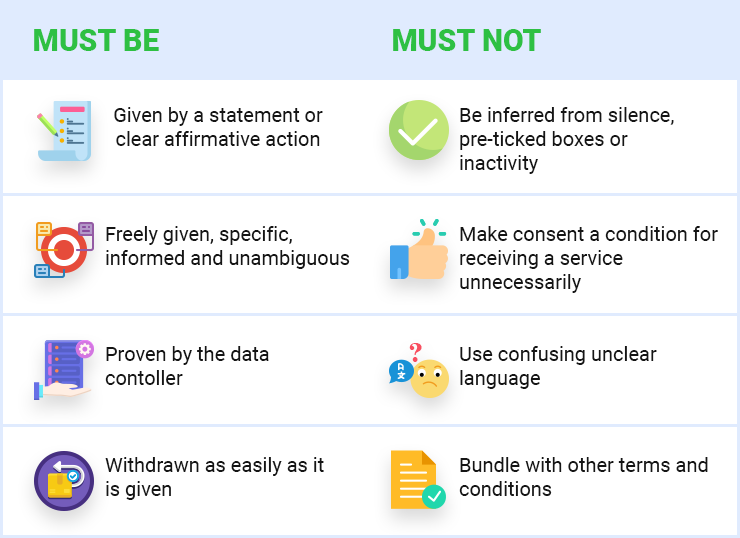
Both Android and iOS have excellent permission managers. The problem is they take every permission access on the same level. That is a navigation app and the Fluffy Bird clone both can ask for location permission in the same way. However, GDPR would constitute both permission on a different level of severity. Flapping birds on your mobile doesn’t need to learn where you’re sitting at. However, the Maps app needs access to highly accurate location data to run navigation services.
GDPR TIP #3: Don’t ask for unnecessary permissions
If your application asks for unnecessary permissions, then GDPR expects that you tell your users why you need those permissions. If you need certain permissions to store information to enable targeted advertisements, then you must warn your customers about the true intent.
So I downloaded a news app and did not give permission to share my personal details with advertisers. The app clearly mentions that advertisements are its methods of monetization and if I want an ad free experience I need to upgrade to a premium version of the app to continue. Fair enough!
Store the Data When You Absolutely Have To
Data is the new oil and businesses don’t want any of it to go away. Most business logics dictate storing every piece of data their mobiles app collects. When it comes to GDPR, the more the data you store, the more the risk. Collecting data you don’t need is not a problem as long as you subscribe to a secure way to delete them. Companies that store too much data for their size are already under GDPR scanner. GDPR won’t be a problem if they know what they are going to do with that data.
GDPR TIP #4: Do not collect data in the first place
However, EDPB would consider any act of storing the data you don’t need as a case of suspected infringement and may subject you to further investigation. The philosophy is if you’re storing the data, then you need it and the board wants to learn the reason. If you don’t have a reason, the board will have many things to suspect which may not be restricted to selling data in dark web, sharing with CPC officials, illegal data mining, social engineering, etc.
Delete any Piece of Data that Identifies a Person, Unless…
If you have any piece of data in public directories, which you can identify to a person, you’re playing with fire. User privacy is of utmost importance to Euro people and government won’t let go off an abolisher without a fine.
GDPR TIP #5: PII data attracts the highest penalties
Euro Zone has some strict regulations around personally identifiable information or PII. For example, a user’s IP address is not classed as PII on its own, but is classified as linked PII in the US and elsewhere. However, in the European Union, the IP address of an Internet subscriber may be classed as personal data. If you log IPs of people using your app and store them in .txt files, you’re already in breach.
PII deserve an encrypted and secure location on the cloud or local storage of your app. A server storage inside a Euro Zone country would turn out to be a life saver if the Euro officials ever come knocking on your doors.
Play with Data Encryption and Secure Connections
Any stored data must be encrypted and transmitted over an SSL connection particularly when dealing with PII. If your application accesses an API that is over a non-secure connection, you mention that to the user with the statement, “he should proceed at his own risk”. If the user suffers a privacy violation while accessing data from the API that would be at his discretion and would give you an upper hand if you ever end up in a GDPR trial.
GDPR TIP #6: Say good bye to HTTP once and for all
Present Accountable in Case of a Breach
Breaches happen and even the finest security measure and practices can’t prevent them from happening at times. If your mobile app encounters a breach in which the intruder got hand of your users’ PII and uploads it on a public domain, you must report the breach immediately.

The board fined TalkTalk heavily because it reported the breach many months later after the rumors mills got too strong to turn a blind eye.
GDPR TIP #7: Report data breaches at the earliest
You’re the head of the company; the board expects you to act accountable for the breach and not play blame games on your colleagues. These games only show your incompetence to take account of the situation and act responsibly. The board will levy even higher fines for hiring a douche and not being serious about your users’ data security.
If you adhered to the best practices as dictated by GDPR, there is nothing to worry about but present your case in a systematic manner and convince the jury that the intruders broke the locks and the keys were in safe hands.
Co-operate with the Agencies and Board Members
If the GDPR notice ever comes knocking at your door, there is a no point of playing hide and seek with the investigators. Chances are they already have enough evidence to file a charge and are only here to clear some air and find some supporting evidences. If you don’t co-operate, it will raise more questions than they want answers to and this will weaken your case further.
GDPR TIP #8: Confess, when you’re at fault
If you co-operate with them at the time of interrogation, answer the questions they are asking and clear the doubts; perhaps, that will clear some misconception regarding your practices around stored data, and you might come clean
Developing GDPR Compliant App with TOPS
At TOPS, we follow the best security and data protection practices to safeguard your users’ interest regardless of their country of residence. Mobile apps developed at TOPS deliver superior level of data security for stored and in-transit data owing to encryption and HTTPS respectively. Mobile app development is done in a way that follows the strictest security standards of data security and protection. Apps developed by us receive security updates from time to time for security. When developing for European markets, we already comply with most of the guidelines issued by GDPR; and are working closely with our clients and partners to deliver application in compliance with GDPR.
How to Choose a Mobile App Development Company? – A Comprehensive Guide
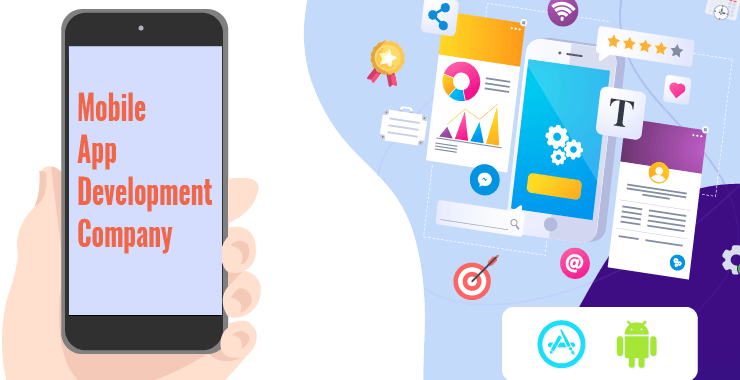
Choosing an outsourcing partner for your next mobile app is everything but easy. First, there is endless number of mobile application development companies out there. Try to Google, ‘mobile app development company’ and you’ll understand what I mean here. Apparently, Google is the best place to look for an app development company.
With so many companies showing up in Google search results, it’s easy to get lost. However, don’t lose your hope already. There are some neat tricks and after a little scrutinizing to the parameters, which I am going to present by means of this blog, you’re going to run out of quality mobile app firms to choose from.
Preps
One of the major problems with firms looking to outsource mobile app development is this that they start searching and approaching firms without gaining any intelligence into the market or perfecting their app idea. This anomaly makes them an easy target of fraudulent app developers that disappear somewhere upon the receipt of payment.
Gathering intelligence
You’re not the only firm looking for an app development company. There are many on the same trail. The only difference is this that many of them are not doing this for the first time. With mobile development getting larger every day, every firm wants to make money out of it. No doubt, there are so many companies out there, confusing the hell out of you.
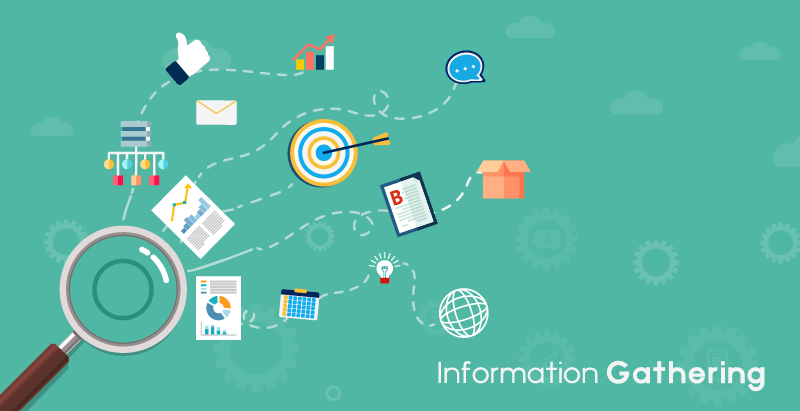
When you approach a company over a cold online search, it expects you would have done some sort of research. When it realizes you did not, they are going to either over-quote you or won’t take you seriously.
I would recommend going through a few YouTube videos and a number of blogs to get a basic understanding of mobile app development before running the hunt.. While the pricing varies greatly from firm to firm and geographies, you should get a fair estimation how many hours it will take to bring the app to the market.
In addition, you can meet some local mobile development companies in your area to gather intelligence.
Shortlisting the firms
As I said, the internet isn’t short of companies that stuff “mobile app development company” in their webpages. However, not every company that stuffs the keyword to manipulate Google search algorithm in its favor develops mobile apps. So are mere vectors to actual companies. Beware! these agents disappear as soon as they get their commission.
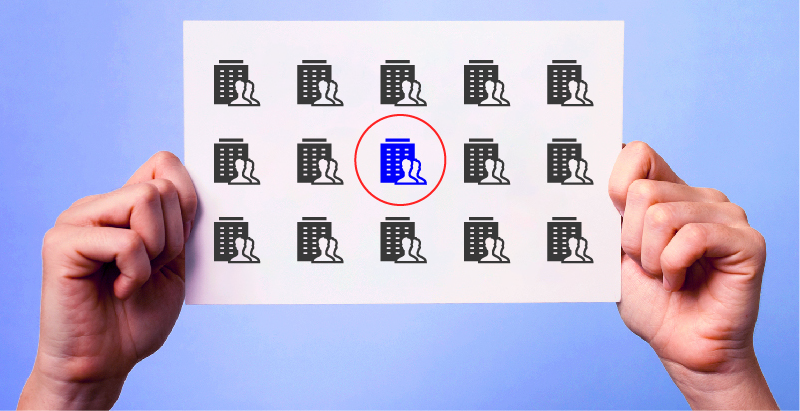
Nevertheless, it’s not hard to tell an agent from an actual development company that specializes in mobile app development.
Tip: Remember, a website shows only the best of a company. If you want to learn the truth, look elsewhere.
When you look for an app development company in Texas, you will encounter three types of websites: development companies in Texas or operating in Texas, a website that lists such companies, for example, Clutch and GoodFirms, and education websites teaching you how to develop an app.
Is outsourcing abroad safe?
While outsourcing development to a firm in the states is a much safer option, a mobile development company easily charges anywhere $100-$150 per hour in the US, which isn’t affordable unless you’re fine spending upwards of $50000 in mobile development alone. On other extreme are mobile developers in Bangladesh and the Philippines that are ready to work for less than $10 per hour. If you are looking for a balance between cost and quality, you can pick East Europe and India.

I personally prefer India as developers there are much more fluent in English than developers in Europe. Also, it’s easier to find a development company in India that is ready to work for less than $40/hour.
Check Portfolio then Crosscheck
Most of the development companies demonstrate their portfolio on their websites. If a certain website you shortlisted do not, it’s ok to ask for it. Most websites have a contact us page to contact the administrator.
Once you have hands-on the portfolio, try to contact the companies whose portfolio has been shared with you. It’s easy to find their contact info as long as their websites have a contact us page. Don’t be shocked if you find a few companies that fail to recognize the developers. In the mobile development market, ‘fake till you make it’ is a common mantra.
I’ll suggest you drop such developers already and go with only those developers whose portfolio you could validate. Credible mobile development companies won’t hesitate from sharing the info about the client they worked with unless an NDA is involved.
Raise an inquiry
It’s time to contact the shortlisted development companies. At this stage, you do not have to share any info about your idea or the app. Just let them know that you’re interested to work with them on an app. Most of them, will contact you back within a couple of days to gather ideas and details for the app you are looking to develop.
Commonly, development firms expect the interested parties to share their contact information on their website from the contact us page. A few firms also offer you free estimation or consultation on request.
A word of caution!
Do not share any details of the app or your ingenious app idea unless the development company has signed a Non-Disclosure Agreement (NDA) with you. Once they have signed the document, they are under legal obligation not to disclose any info about the app to anyone. NDA will give you creative and technical freedom to share your thoughts with all the shortlisted companies.
Passing the info is important for development companies to understand the scope of your work and translate into the number of man-hours required and, ultimately, cost.
Negotiate the cost
Once the shortlist is ready, try to negotiate the cost for the number of features available. Most of the development firms are more flexible with pricing if you commit them long term development plan or give a handful of references. You will be negotiating with more than one firm at a time so keep a tab of the price you last negotiated with a firm.

You can make the final decision once you have all of their prices. It’s apparent to go with the lowest price but there are more factors to consider. A major one is a features-to-cost ratio—the greater the ratio the better the deal you’re getting.
Remote Team
You will be working with a virtual team sitting somewhere on the globe. Most firms let you interview and select the members of the cloud team. Remember, you’re going to pay them hourly. So this may occur to you: you don’t need the most efficient person who can deliver the maximum in minimum time. A senior developer will help you make most of the hours you’re going to pay for. However, they are costlier.

A balanced team is consists of a couple of senior developers and 5-10 junior developers working under the command of a supervisor. Selecting candidates for your team is a one-time process. Most companies to cut down chaos allot you a single point of contact, mostly a team leader or a project manager, depending upon the size of the project.
In case you find the developers not up for the job, it is better to look elsewhere probably for a higher cost.
Go Agile
This goes without saying but most new companies looking to develop a mobile app rush through their apps development cycle and try to stuff more features that it can take. This rush leads to the development of an app with half-baked features and too high a cost.
The biggest benefit of going agile is that new features are added gradually. So you have more time to test the features of an MVP. In addition, the developer will bill you for only the features he added, which will help you keep costs in check.
Hire TOPS Infosolutions
If you are looking for a mobile app development company that works with a global clientele and has presence in various countries, there is no better app development company but TOPS Infosolutions.
Frequently Asked Questions
Do you practice the Agile App Development Process?
Indeed we do. The most significant advantage of going agile is that you can add new features progressively. So, this gives more time to test the features of an MVP. Additionally, we will bill you only for the added features, which will significantly keep the costs in check.
How secure is my app during the development process and post that?
We follow strict ethics when it comes to confidentiality. We encourage our clients to sign a Non-disclosure agreement (NDA) which entitles us to be under legal obligation not to disclose any app-related information to anyone. So, you need not worry about it.
Will You Maintain My App Post-Launch?
We support maintaining your app post-release. Our developers at Tops are available around the clock to offer maintenance assistance.
What will be the cost involved to develop an app?
The cost varies according to the various features and aspects that your application demands. The timeline and workforce allocated also play a significant role in determining the cost. To know exactly how much it would cost for development, drop us your requirement, and our experts will get back within 24 hours with a free quote.
How to Setup a Mobile-first On-demand Delivery Business?
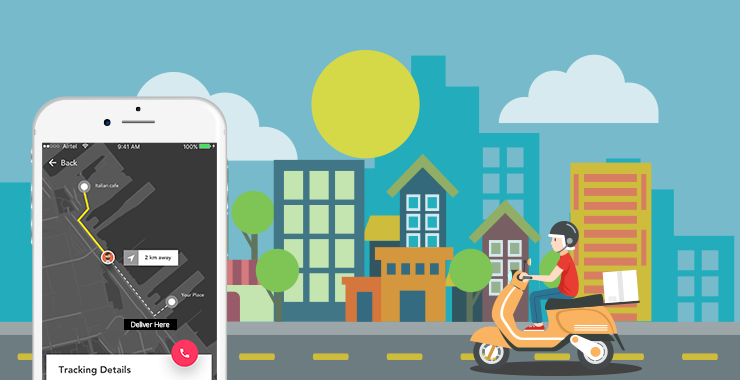
Who doesn’t love the idea of getting their favorite pizza delivered home? If you’re a restaurateur delivering food to the location, it’s a win-win situation for you. You can cater to more diners than the sitting area in your restaurant allows, which means more business without additional investment into real estate.
Let me give you an example, suppose, you run a little diner in your backyard that can accommodate 20-30 people at a time. Your average income per diner is $2 and every day you welcome 200 such diners, making an estimated $12000 every month.
Now suppose you open your doors to home delivery and hire a delivery boy. The delivery boy delivers 30 food packets every day and you have set the minimum order amount to $10. Now, you’re making an additional $10000. Even if you deduct the expense on the delivery boy. This is still an incredible deal.
Had you invested in additional real estate for the restaurant, that would have cost you anywhere between $40000-$100000.
However, managing a food delivery business or any type of on-demand delivery business is a lot more complicated than the example above is. Let’s take a look at what it takes to run an on-demand delivery business.
On-demand Delivery Business from Boom to Bane
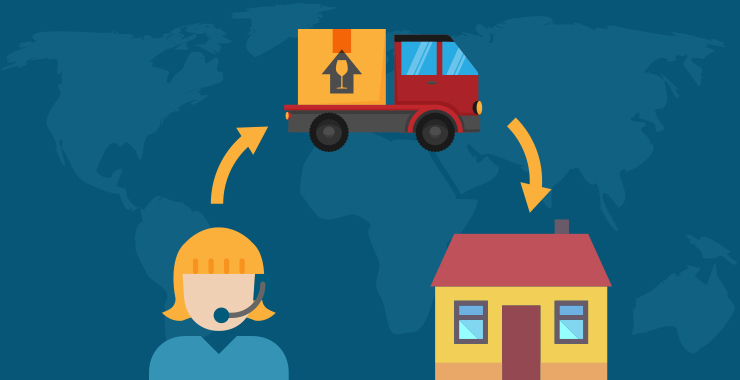
We have grown many times since the first pizza home delivery service started. What happened in the meanwhile is this that soon restaurateurs got overzealous with the whole idea of increasing business income without substantial investments. Every restaurant started some form of phone ordering business. It was so much booming that online orders soon took over diners sitting at the restaurant. Soon restaurants were getting far more order requests than their tele-callers could handle, kitchen could cater to or delivery boys could deliver. The growing competition means thinning profit margins. The system crumbled under its own weight and proved inefficient at the end of the day.
Many restaurants capped no. of phone order they will take, thus, putting a full stop to the boom.
The Reincarnation around Mobile and Cloud
In July 2010, an app-only taxi-hailing app was doing rounds in tech circle of San Francisco, at the heart of the Silicon Valley. Many called the app at the forefront of latest mobile and cloud technology revolutionary. The idea was simple rather than going to the taxi the taxi will come to you with a single tap on your iPhone.
The ingenious idea soon infested other industries including the vulnerable food delivery and later professional services like plumber and baby sitter, even a doctor.
By the turn of 2015, everybody from your local grocer to your favorite restaurant to the baby sitter who lives next door were part of one of the various on-demand marketplaces mushrooming on the app stores and catering to local businesses and professionals in your area.
The decreasing cost of Android phone, a rising middle class, and affordable cloud computing services were the principal contributors to the reincarnation of on-demand delivery business.
The On-Demand Boom
The success of Uber gave confidence to many industry pundits in renewing mass’s interest in on-demand delivery business. After all, mobile applications are much more capable than dumb phone calls to telecallers. This gave way to on-demand boom. Every startup or industry player wanted to capitalize on the new playground given birth by Uber in chassis of a mobile app
Soon, there was an Uber clone for every sort of thing or person whether a person wants a plumber to fix a dripping faucet in his living room, monthly grocery delivered at his place or taxi or Uber to head to the next meeting.
As I said there are all sorts of on-demand marketplace for everything or person you can think of. So is the number of players competing in the space and apps for each of them. This is where the term came, “There must be an app for it.”
The Power of Local Provisioning
On-demand delivery apps are relevant because local businesses and professionals back them. Those apps are only the marketplaces that connect with the local providers or businesses. While the latter can work with the former, that is not the case the other way around.
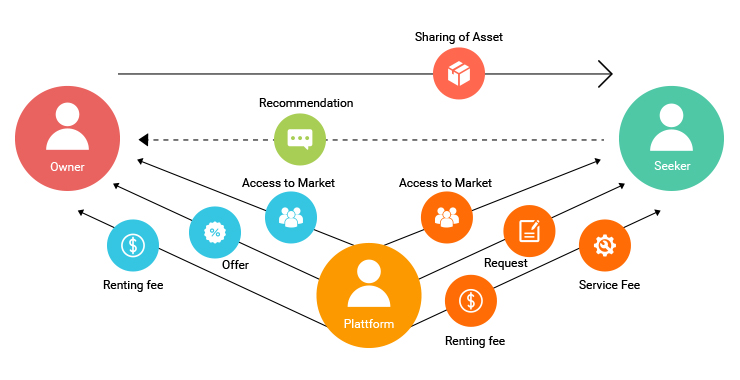
If you’re looking to enter the opportune market yourself, you’ll have an edge if you have influence in the local market. You need people to deliver what your users demand. If you’re a grocer, then you need delivery boys to deliver grocery. If you are cab company, then you need drivers to drive your cars around and if a home services provider, then you need a number of handymen ready to deliver services to your users.
In a nutshell, you need to convince a lot of people to join your app-based marketplace before you seek an app developer to build the app ecosystem around your marketplace.
What is Driving the Interest?
At the center of on-demand economy, is a powerful ecosystem of mobile apps. No doubt, mobile app developers have been constantly busy since Uber came. There are all sort of startups keeping them busy and they have every reason to.
The investment in on-demand startups has grown more than 1400% from $74 Billion in 2014 to $10,293 Billion in last quarter of 2017. Moreover, an on-demand startup has better chances of capturing seed funding, a study by CBInsight indicates.
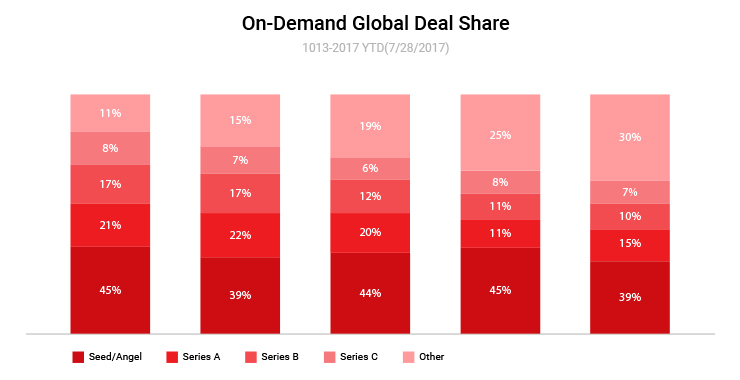
And it’s not just the investors interest. The revenue from on-demand economy will multiply 23 times from $14B in 2014 to $335B in 2025, predicts PwC
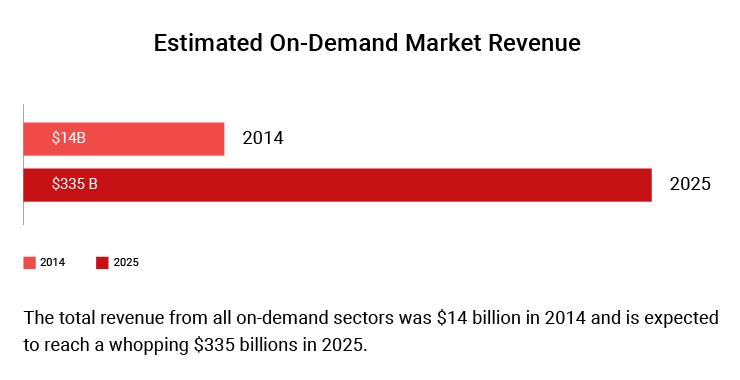
Evidently, users’ spending in the on-demand mobile app economy is rising at unprecedented pace. The total spending from year 2016 to 2018 grew 58%, National Technology Readiness Survey. Some of the sectors that received the largest piece of pie were online marketplace, transportation, and housing. Food delivery, surprisingly, came 4th in terms of investment but grew maximum in the period, Rockbridge report suggests.
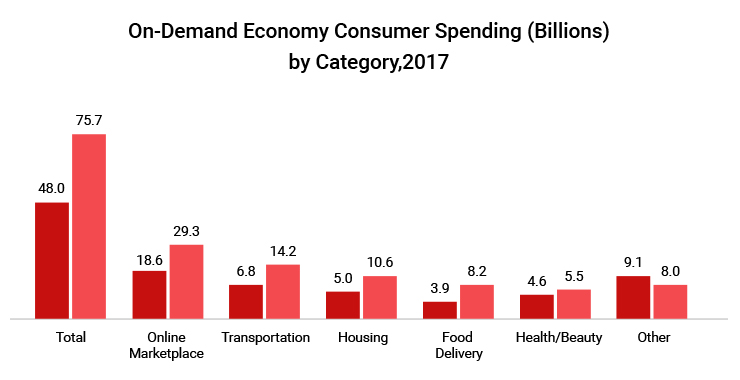
Building the App Ecosystem
While those are great numbers, on-demand services won’t have existed in the first place had it not for mobile technologies and applications. If you have used Uber in the past, you know what I mean here. The level of convenience provided by apps like location awareness, turn-by-turn navigation, real-time locations sharing, in app chat and support and flexible payment options were unheard of before.
The Uber you use to book taxis is only a part of the app ecosystem. A larger part of the ecosystem is shared various players in the on-demand business and each role has a dedicated app.
In on-demand delivery business, there are generally two sets of people involved in addition to the admin, manager, or owner. Of course, at the center are the end users, who originate the demand. Then there are delivery boys who fulfil those demands.
Therefore, we need three apps: users, delivery boys, and merchants. Let’s take a look what their app look like.
Users’ App
The user app originates the demand–what he or she wants. The app is simple, the users requests what he wants, when and makes payment—all in the app. Upon request fulfilment, he waits for the desired person to arrive and deliver him the thing or service.
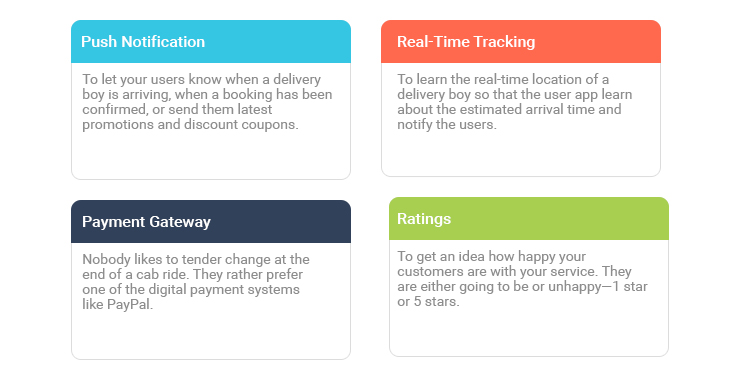
Delivery Persons’ App
In on-demand delivery business model, the delivery boys either pick up an item from a user or drop off an item from a user to a hub. So when I want a parcel collected from courier company and delivered at my doorsteps I use their app. Alternatively, when I want a food parcel from my favorite restaurant to reach me. I ask a delivery boy to deliver it to me, who picks the parcel from the restaurant, which acts as hub here.
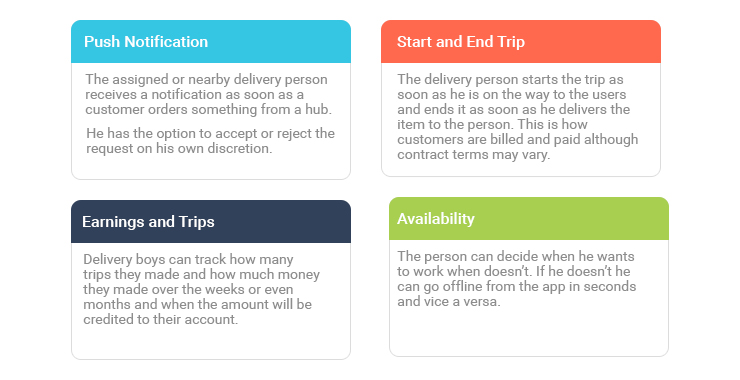
TOPS has Developed a Bunch of On-demand Apps
If you think developing on delivery apps is too much on your side, you can ask us to. Our team of mobile app developers has an experience of developing tens of on-demand apps. Being a top ranked, an award winning mobile app development company, we have a global clientele and worked with more than 300 different clients since inception.
There are many advantages of developing on-demand mobile apps with TOPS Infosolutions:
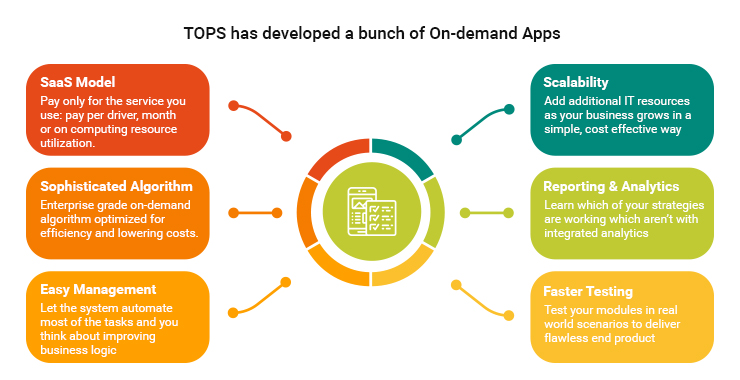
Final Remarks
TOPS has the reputation of delivering end-to-end IT solutions to startups into on-demand businesses. Companies around the globe prefer us for faster development time, advancing on deadlines, transparency, cost checking, above all, top of the line support.
Apple Ditches Home Button and Adds Notch to All New iPhones
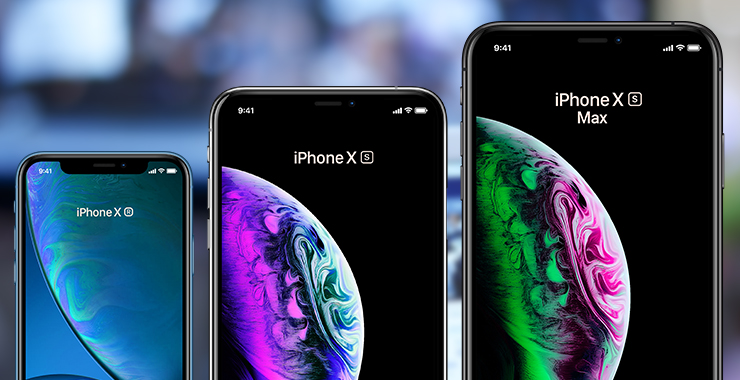
After so many leaks, predictions and speculations, Apple has launched the next generation of iPhones. Like the last year’s event, this year too three iPhones were announced at the recently concluded Apple event: iPhone XS, iPhone XS Max, and, cheaper, iPhone XR. Last year’s iPhone X has received tons of updates. Its successor comes in two sizes: iPhone XS (pronounced “ten S”) and iPhone XS Max.
iPhone XS Max is a larger avatar and features a bigger battery and screen than iPhone XR, which among many upgrades sport the next gen Apple SoC, A12 Bionic. A12 Bionic SoC, in fact, is standard across all the iPhone announced in 2018, including the entry-level iPhone XR.
Apple A12 Bionic
Apple A12 Bionic processor features 6 cores in big.LITTLE configuration wherein 2 high performance cores are up to 15% faster while remaining 4 efficiency cores consume up to 50% less power than A11 Bionic of iPhone X.

The current generation of Apple SoC boasts a GPU with four cores and lossless memory compression. The GPU delivers up to 50% performance gain over A11 Bionic in terms of graphics power.
Say ‘Goodbye’ to bezels and ‘Hi’ to notch
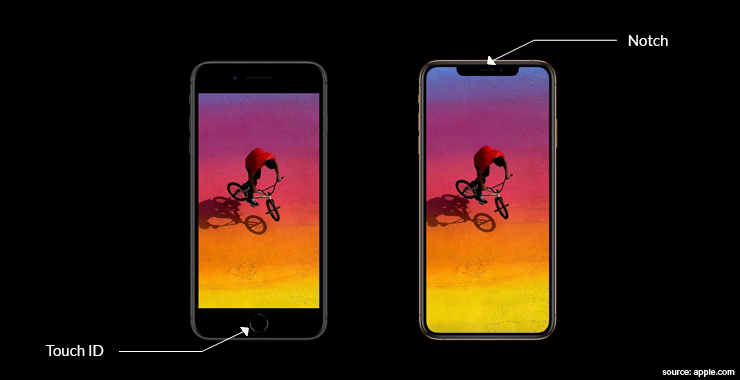
With iPhone XR, Apple has ditched bezels and embraced ‘notch’ altogether. While last year’s iPhone X did have bezel less and ‘notch’ design, the entry-level iPhone 8 and iPhone 8 Plus, had profound bezels and notch absent. Not to mention, those two were the last iPhones to have a home button. Apple has ditched the Home button and Touch ID in favor of Face ID and the TrueDepth camera respectively in all iPhones.
The new ‘entry-level’ iPhone: iPhone XR
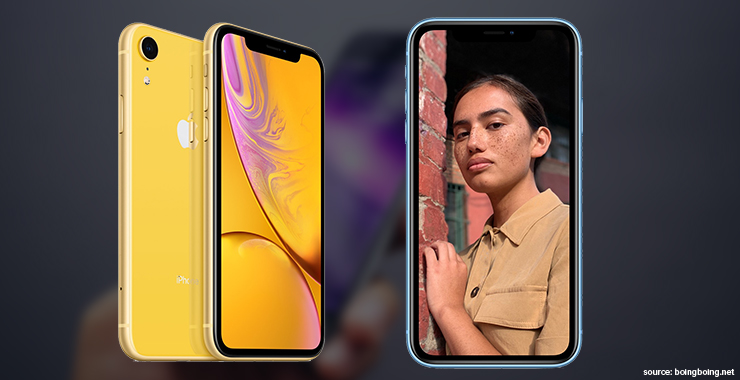
iPhone XR, in addition to using the same processor as the iPhone XS and iPhone XS Max, supports Face ID and has TrueDepth camera. The major difference between ‘XS’ and, cheaper, ‘XR’ is the display technology. The cheaper variant features a LCD display, which Apple calls “Liquid LCD”. iPhone XS and XS Max, on the other hand, have a more vivid “Super Retina” OLED display. Unfortunately, iPhone XR only uses a single rear camera like the iPhone 8. Seems like Apple likes to reserve more premium features like dual-camera system, wireless charging and OLED display for its more premium phone offerings namely, iPhone XS and XS Max.
SmartHDR, Portrait Mode, and OIS
All the three iPhones support Smart HDR, optical image stabilization and portrait mode despite iPhone XR missing a dual-camera system. SmartHDR is courtesy of A12 Bionic and automatically makes improvements to photos using machine learning.
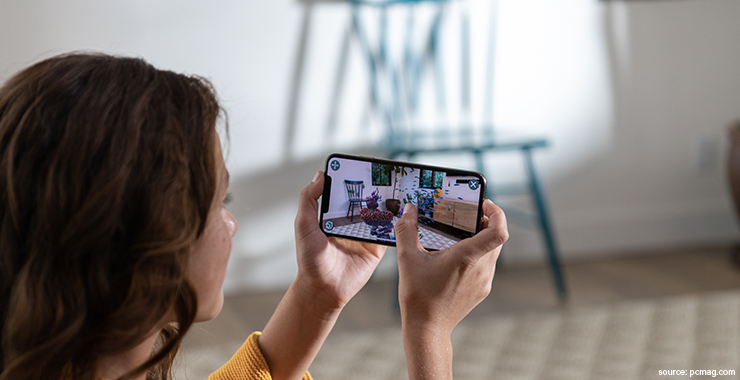
Apple, expectedly, has insisted on 12MP rear camera setup this year too. XS and XS Max have two of those 12MP cameras in f1.8 and f2.4 setup respectively while XR has only one in f1.8 setup.
Apple has made last year’s TrueDepth camera standard across all its iPhone models. That is, the same 7MP camera is present on all the three announced iPhones.
Conclusion
Although subtle, Apple brings some noteworthy features with the new line of iPhones. All three new models have got rid of the home button to make room for more screen. The bezel-less screen, indeed, looks overwhelming from every angle. Not to mention, Apple has the most sophisticated facial-recognition technology to unlock its device thanks to the industry-best TrueDepth camera, which is now, fortunately, standard across all the 2018 iPhones. I would like give a clear thumbs-up to Apple for that.
Apple iPhones may be getting more expensive every year. But with the amount of additions and efforts it is putting on them, iPhone are still worth every penny and I don’t think that is changing anytime soon.
Can’t wait to get your hands on the new iPhone? We have a good news for you.
iOS App Development with TOPS
There is even a better news if you’re an app developer, publisher, or someone looking to develop an app for the new iPhones. At TOPS, a leading mobile app development company, we have an enormous experience in developing leading edge applications for iPhones, iPads, and Apple Watch. An expert team of iOS developers, persistently works around delivering one quality iOS app after another and they are ready for the new iPhones too.
Android Pie: What’s in there for Developers
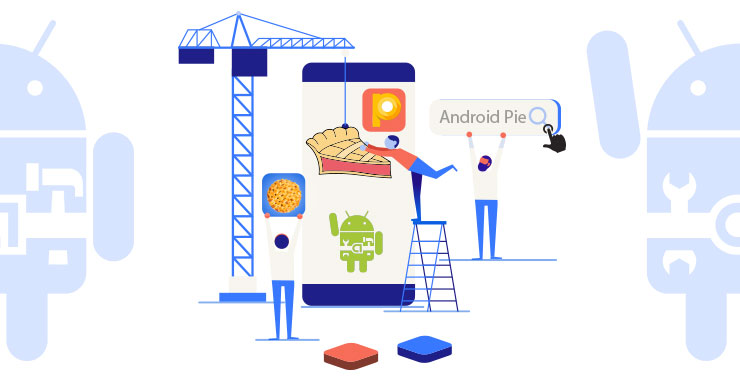
Android 9 or P will be called simply Android Pie. Google launched the 9th iteration of Android after more than an year of testing by early adopters. Android Pie is high on machine learning that is your phone will become smarter with time.
For developers, Android Pie gives you new ways to drive engagements and enhance your apps. So let’s look at what Android Pie brings for Android app developers. As I said, the highlight of this year’s Android release is machine learning. Machine learning makes the smartphone faster, long lasting, and easy to use.
-
Adaptive Battery
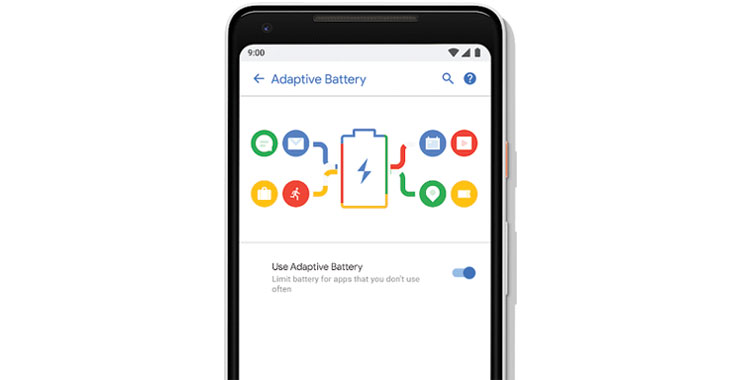
Source: Google Blogs
To save battery, Android Pie will restrict background activity of rarely used apps. If you’re a developer, make sure your app is optimized for Doze, App Standby, and Background Limits or adaptive battery will inhibit your app’s activities when the user will upgrade to Android Pie.
-
Slices

With Slices, you can enable UI templates that will display outside your app’s full screen experience. User can interact with these rich, dynamic elements belonging to your app from outside it like Google Search app.
-
Content Awareness
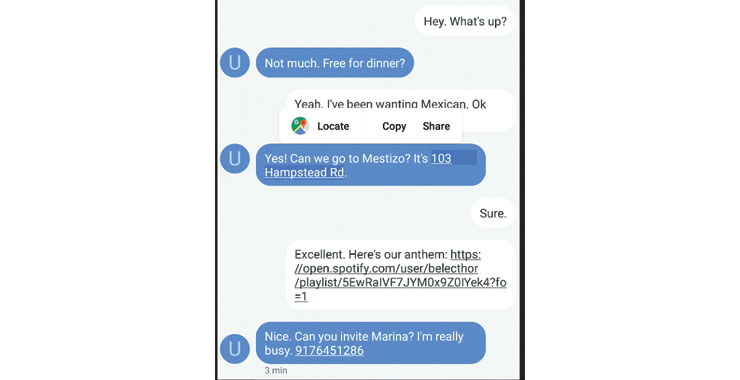
Developers can take advantage of the TextClassifiermodels which revolves around TextClassifier API. The model via Linkify API lets developers enable augmented options for quick follow-on user actions.
The machine learning model can identify object like Dates and Flight Numbers.
-
‘Notch’ is Supported
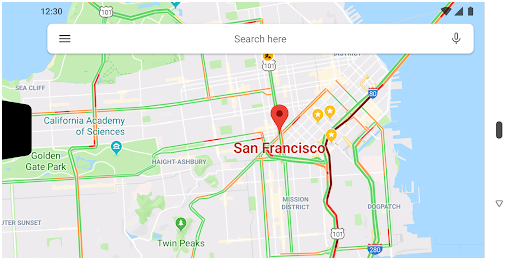
Android Pie officially supports notched displays now. The display cutout APIs contemplates the place, size and shape of the ‘notch’ and request full-screen layout around it. A developer Option simulates several cutout shapes to shape apps around them.
-
Smart Replies
The new MessagingStyle API displays conversations, adds photographs and stickers, and suggests smart replies. Developers can use ML Kit to enable smart replies on their app.
-
Text Magnifier
Android app developers can enable magnifier for all the view options. The Magnifier widget can zoom any view or surface, not mere text.
-
Biometric Methods
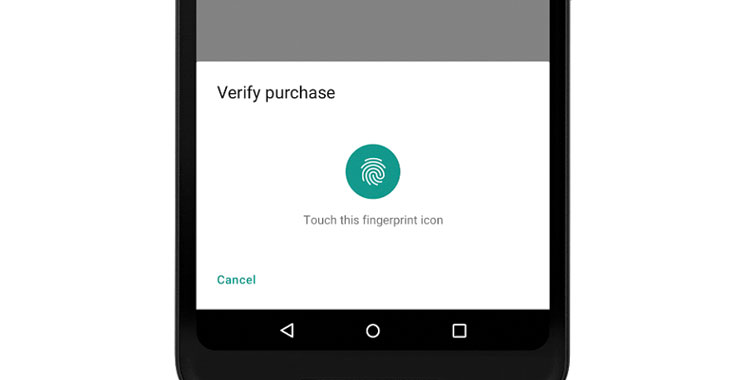
Developers no more have to build their own dialog for an app. Android Pie introduces BiometricPrompt API that has a stock system dialog. The API at this moment supports Fingerprint, Face and Iris authentication.
-
Android Protected Confirmation
Android 9 introduces Android Protected Confirmation to ensure that a prompt is indeed confirmed by the user and happened in a Trusted Execution Environment (TEE). The app can only verify prompt when TEE does.
This will keep the apps safe from false prompts that mimic system prompts.
-
StrongBox
StrongBox is the new KeyStore type that provides API support for devices that have secure, dedicated hardware to store keys. Keys should be protected by a StrongBox security chip in your KeyGenParameterSpec.
-
Default SSL
To raise user’s security, all the traffic to and fro from your app and application server will happen over a secure connection. Android Pie will block by default all exchanges between cleartext traffic.
-
More permissions
Android Pie will restrict idle apps to gain access to mic, camera and other sensors. Moreover, developers will now need READ_PHONE_STATE permission too to access build.serial. Android app developers can use Build.getSerial() method.
-
Multi-camera API

Android Pie natively supports more one streams of open camera in an app for the devices that support multi-camera API and have two or more camera setup. You enable features like loss less zoom, bokeh, and stereo vision.
-
HEIF and HDR VP9 image encoding
Android Pie support HDR VP9 Profile 2 on HDR capable devices. In addition, it adds HEIF image encoding. HEIF format compresses image without loss in quality. Developers can use ImageDecode for jpeg-to-heic conversion.
-
Dynamics Processing API
With the API, developers can filter out certain sound frequencies when a user plays audio from their app. If a person is speaking in loud environment, the API can filter out the noise.
-
ImageDecoder API
The API makes it easier to decode images to bitmaps or drawables. Apps can create bitmaps from URI, byte buffer and file.
-
Indoor positioning
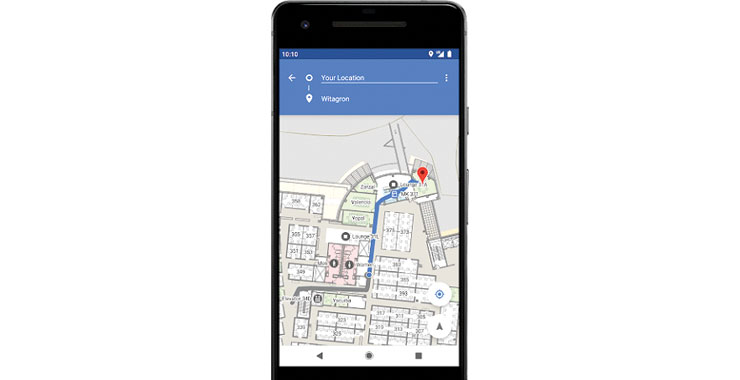
Android developers with Android Pie can build indoor positioning support in their apps with native support for Wi-Fi Round-Trip-Time (RTT). If the hardware is present on the device, they can use RTT APIs to find relative distance from an absolute Wi-Fi Access Point.
-
Open Mobile API
Google brings GlobalPlatform Open Mobile API to Android Pie. Android app developers can now enable apps to use the OMAPI API to access secure elements (SE) to enable smart-card payments and other secure services.
-
Optimizations around Kotlin
Android Pie brings several compiler optimizations to Kotlin, especially those that target loops, to extract better performance.
A Modern Android
As part of Android 9 we are modernizing the foundations of Android and the apps that run on it, as part of our deep, sustained investments in security, performance, and stability.
Finding New Dimensions in Classic Hybrid App vs. Native App Debate
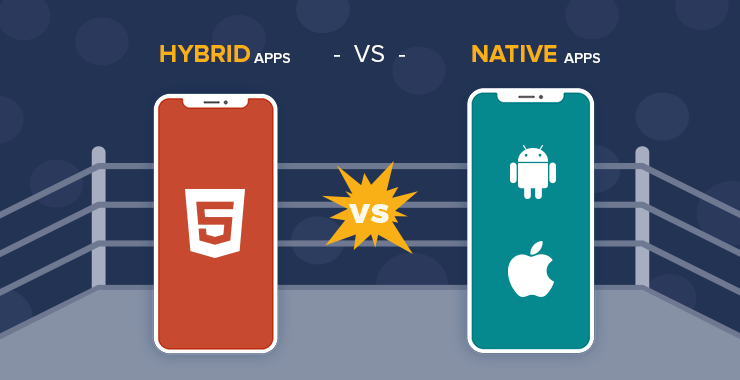
JavaScript is Mending The Classic “Hybrid App vs. Native App” Debate
In the past apps that were built using HTML/CSS and JavaScript weren’t seen as a strong viable route due to not having that “native feel” or native mobile app development delivery.
However, I’ve seen some real advances in the past couple of years specifically with Ionic that I’d like to think are closing the gap. As a .NET guy and brand new to mobile development,
I guess my question is, am I taking the easy way out by completely bypassing learning Swift and Java and just focusing on frameworks like Ionic in which case I should really start focusing on Swift and Java or even Xamarin, or am I standing on the solid ground taking the hybrid app path?
What Has Changed? Hybrid vs. Native App Development
About 2 years ago I would have said, “Absolutely, you have to be doing native development” that you should learn Java, you should learn at that time Objective C or Swift or you should go the Xamarin route. I still think that Xamarin is a good option.
On the hybrid side, it’s interesting to see where phones are going. Two years ago, what would happen is when you load a hybrid app in your phone it would obviously be slowly, you could tell it was really a web page and it didn’t quite have that native feel.
However, There’s Been 2 Kinds oF Advances That Have Happened In The Mobile Space
- Certain browsers built into the app have made some of the JavaScript elements look more native.
- The speed of these devices has increased dramatically.
Now, I still think that the biggest thing that’s holding us back in the technology world today, not just in mobile development but also in technology completely is battery. I think once we get to the point where we have batteries that perform 10 times better than what we have now,
and I believe we will have that breakthrough and it will happen, then we’ll have this huge explosion and one of them will be in processing power on mobile devices. Already processing power on mobile devices is increasing extremely rapidly.
What I would say is that based on those two things in the future we’re probably not going to be native. It’s probably going to be co-interpreted. It’s probably going to be a hybrid app and you’re going to be able to run apps in the browser.
It’s going to run so fast that it’s not going to make a difference and we’re getting real close there. I’d say even today as you said, using Ionic framework, you can get to the point where it’s hard to tell that this is a non-native app.
I’m not sure which way we’re going to go. I think that either way that you can make an argument and that you’d be on solid ground. I do think that—it’s a question of how long will it take it to get there. I think hybrid app development has always been where things are going to go, but before, in the past, I’ve argued against it.
-
Better Too Early Than a Little Late
You don’t want to put your stake in the ground way, way up here. Being too early is bad, right? The Apple Newton was the iPad before it was popular. It was too early and Microsoft had a tablet computer before the time of the iPad.
If you’re too early that’s bad so you don’t want to be too early. But I think at this point it’s eminent that it’s going to catch up, that hybrid is going to catch up that the devices are going to become fast enough, that the mobile browsing experience is going to become good enough that you could—and right now you can make a living creating hybrid apps and that could become the de facto standard in a very short time.
-
We Don’t Have… No Winners!
I would say at this point in time you could go either way. I think that we’re not going to have a clear winner or loser. I would personally try and at least have some experience in both sides, to be honest, so that you can go either way.
I would pick one as a specific dominant specialty that you’re going to choose and then I would make sure that if I were going with the Ionic and hybrid apps that I would understand enough about the basic. I’d know enough Java and Swift, and native application development to at least do some very simple development so that you can go that direction if you need to.
But yeah, I would say at this point if you wanted to just go hybrid and you felt like that was the future that that would be a safe bet to make and that you’ll do fine with that. But we’ll see. In about a year from now I think we’ll know for sure. I think we’re about a year away from knowing for sure and the whole native side could totally collapse on us.
I don’t think the hybrid side will. Before where I said put your chips in the native basket, now I’m saying probably the hybrid side is probably a better place if you’re going to put your chips somewhere.
-
Can You Get That Native Experience in a Hybrid App?
You absolutely can. The most important thing to understand though is what a hybrid app actually is? We can look at something called Cordova which is a popular framework for hybrid apps to kind of understand this.
What you get with Cordova basically is a Webview that has a native API that communicates with each other. You can write functions in JavaScript that communicate with native functions that can control the hardware and then communicate back to the JavaScript side and this works amazingly well.
Well you’ve got to keep in mind, it’s still a webview and it has the limitations that wasn’t pass for example heavy graphic intensive applications and stuff like that. You’re really limited to the rendering engine of the browser of that particular device which can change even between devices.
Many Android devices don’t have similar web browsers so why would you want to use a hybrid framework.
-
It Comes Down to Budget and…
First thing is budget because you can do a lot more with a lot less. You don’t need to have an Android team, an iOS team, a Windows team, and a web team. You can essentially do all of that with one team, which also means it’s easier to implement a new feature. You don’t have to write it four times you just have to write it one time.
Another extreme example of this is having an app that is in 20 different markets across the United States. You don’t want it to look the same and have the same functionality. You can make 20 different apps for all of the different platforms while only editing one codebase.
Mobile App Development Process – Steps to Create Successful Mobile Application
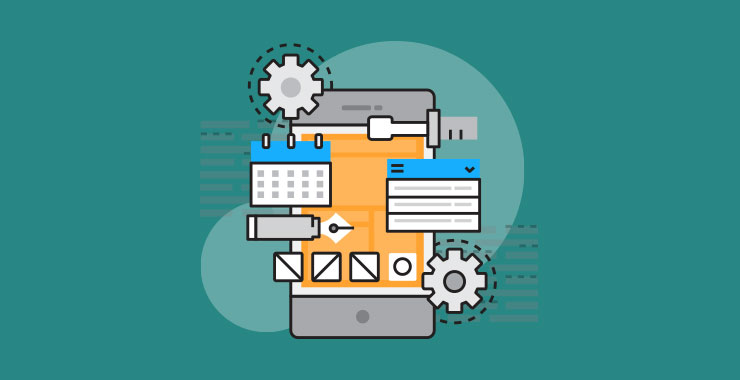
In 2022, nearly 258.2 billion smart-phone applications will be downloaded and the worldwide revenue generated by the mobile app industry is also expected to witness huge jump – from an already impressive $45 billion in 2016 to a staggering $80.6 billion by 2020.
Mobile app ecosystem is crowded with the apps for all needs; each day, thousands of apps are getting developed and published on app store and play store, but only few app gets to the top position. Although, developing a useful mobile app is easier but developing an app by considering each step of the development cycle is something that can give you success. When it comes to mobile app development, every step is important; cutting the corners may affect the sustainability of the final product.
Below-mentioned steps will help you to focus on each task, while not missing the key aspects of mobile app development process.
Step 1: Market Research
When you think of developing an app, it is important to do the basic groundwork for the app. You should research about the target market, target audience, competitor analysis before beginning the development process. You may think that your idea is great, but sometimes it just doesn’t fit in the current market trends.
If your idea already exists, research on what unique things you can add to attract user’s attention. Behind every thought in developing an app, keep the end user in mind and do extensive research on the following question…
- What problem your app will solve?
- Will this feature benefit the user?
- What you want your app to do
Define your budget and do the detailed survey in the early stages for the smoother development process.
Step 2: Wire Framing
Once you are done with the thorough market research, the next phase of developing a mobile app is preparing the detailed scope of the work. Develop a wireframe of your app and draw detailed sketches of the envisioned product that can help you to check usability issues. Wire framing includes details on the platform, features, feasibility and specifications and ensures that mobile app development process is in sync with your requirements.
Take the feedback from the industry experts and figure out the loopholes because at this stage changes can be easily incorporated. Now, you will have a clear understanding of how your ideas will combine together into a functional app.
Step 3: Technical Feasibility Assessment
Having a visual understanding of the app is just not enough, you need to check out whether the backend systems will support the app functionality or not. To know it, you need to get access to the public data by sourcing public APIs. Moreover, an app will have different requirements depending on the platform like iOS, Android etc and the device like smart phone, tablet, wearables etc. You may need to alter the wireframe if there are any technical limitations during technical feasibility assessment.
Step 4: Design
To make your app look great, you need to know the features and outcomes to deliver great user experience. You can create multiple variations of a screen by playing around with the layout, navigation buttons, graphics, colors, styling, fonts and other visual elements. Your goal must be to develop aesthetically pleasing app enough to attract the target audience.
The team must consider all the parameters necessary including functionality, design concepts, budget, timeline etc. to create engaging user interface. Developing static mockups will provide you a clear idea of how your app will look like and how the user will navigate through the app.
Step 5: App Development
As the development progresses, the app passes through couple of phases:
- Alpha phase: In this phase, only the core functionality of the app is presented which is error-prone and not tested
- Beta phase: In this phase, the app is lightly tested and bugs are solved and most of the proposed functionality is integrated
Agile and Scrum development approach is preferable as it provides collaboration, transparency and rapid iteration benefits which can adapt to the changes easily. During this stage, it is vital to consider multiple factors like multitasking, form factor, device and OS fragmentation. It’s of no use to incorporate the features that are not compatible with the majority of the smart phones.
Step 6: Testing
After developing the app, it is crucial to test the app to find out the bugs in the application. This is all about putting the plan into action and coming up with the first iteration of your developed app. The app is tested for usability, compatibility, security, interface checks, stress and performance to ensure it is bug-free and that users are comfortable with the interface.
In User Acceptance Testing (UAT), you would get a clear idea whether your mobile app worked for the intended users or not. If the feedback calls for the major changes, you need to repeat the process right from the wire framing till the app becomes bug free.
Step 7: Deployment & Maintenance
Finally, your app is developed, tested and ready to launch! Understand the norms of publishing the app on App stores. App stores have specific quality standards and security requirements for publishing an app. For different categories the policies of submitting an app are different.
The release of the app on the App stores is not the end. The app required regular updates and there’s always room for improvements and enhancements. Working regularly with your development team, you’ll be able to keep your app up-to-date and maintain its relevancy with the changing times.
Conclusion
Every app is different from another in one or the other way. But the step involved in mobile app development process remains consistent as mentioned above. To make your app successful, you need to follow each step carefully. The process of mobile app development is never ending process; you need to update your app and launch a newer version as and when the trend changes. When users start using your app, you will get reviews about how much satisfied/unsatisfied your customers are. Seeing their feedback, you need to incorporate features in the next versions of the app.
Looking for an experienced mobile app development company who can create your app from scratch or help you in one or more of these steps? We’re just a click away.
Emerging Technologies: The Future of Real Estate Industry
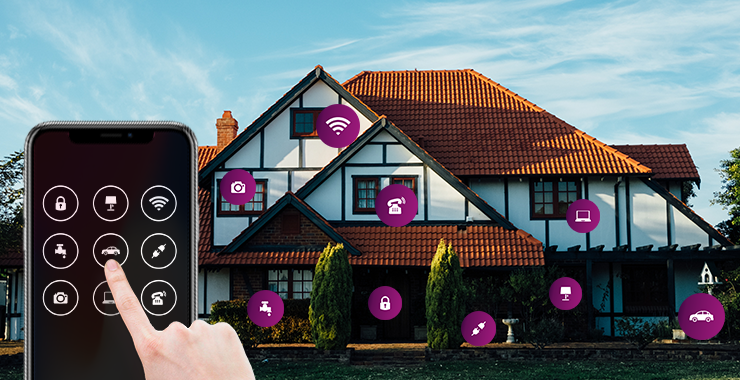
“There is no substitute for innovation. Original and Revolutionary idea will always rise on top”- Richard Branson
Looking at the current scenario, real estate business is cluttered with too much of services under one roof with no transaction transparency and uniqueness. When searching for a property, potential buyers have to meet the realtors, view property and at last, discuss about pricing. Moreover, the chances of fraud are always at its peak.
How can we overcome these challenges?
With the increased mobile penetration in the daily lives of people, businesses can operate from anywhere. Mobile apps as well as web apps enables real estate business to view and showcase the property on the smart device and also provides easy access to check space details, appointments, reports, tracking of leads etc.
Adapting the emerging technologies is becoming imperative and helps the real estate industry to hit the mark. Let’s run down through the emerging technologies that can help realtors.
Chatbots
As the digital world is growing, customers expect impromptu interaction with the right information at a regular interval of time. Realtors may struggle to meet this need! But thanks to the Chatbot, they can provide right information anytime. Customers generally turn to internet for buying and selling houses but feel reluctant to fill the registration form.
However, they may be ready to talk with the person who is sitting at the backend (chat bots). Chat bots interacts with the customer by making use of internal and external databases to offer personalized interactions and provide specific data to each prospect; resulting into higher lead conversions.
By automating the initial conversations between agents and prospects, Chabot can surely be an effective and efficient tool in engaging visitors and higher lead conversions. If used in a right way, they can be a key part of realtor’s marketing approach lead conversion.
Blockchain Technology
Blockchain has the ability to transform real estate industry through recording and combining transactions into decentralized secure ledger system. It creates block of transactions that are linked and secured using cryptography that no party has control of. In present situation, the transactions in real estate sector are non-transparent and take place through brokers, lawyers, and inspectors and so on. This involves high risk.
To avoid this, Blockchain technology can be used where anyone can record information, without being censored or without needing any permission. Moreover, Blockchain technology cuts off third party cost; to prove authenticity, the seller can legitimately transfer the ownership to the buyer without having to pay for third-party verification.
This technology can also be helpful in creating smart contracts, where seller can get away from slow loan process by creating a digital id. And by doing so, transfer of ownership would become seamless and much quicker. These smart contracts are permanently stored on Blockchain and become irreversible and unalterable.
Artificial Intelligence
Artificial intelligence can be used in predictive analysis where, real estate investors can set the growth goals and have them monitored with AI tools which can predict risk based on investor parameters and make adjustments to reach financial goals. AI plays a main role in property management where it can predict when maintenance system expires or are ready for replacement.
AI can help buyers in decision making; when machine tells you that, “property you are browsing is a good deal”, it’s because AI algorithms have calculated that answer based on the data that was made available. When a human real estate agent tells you it’s a good deal, it may be because of their instinct or because they may be interested in getting more profit or selling property faster.
Virtual Reality
Before deciding which property to buy, client has to visit multiple properties to find the best one and this consumes more time and money. Moreover, if client is staying miles far, it is not always a feasible option to visit each property. But, Virtual Reality can solve this problem enabling millions of people to visit the property without leaving their homes. Real Estate agent can use VR headset to get three-dimensional walkthrough property and immersive experience of the property.
If client has to check multiple properties, in matter of minutes they can virtually check out a good number of locations and decide which is worth buying. Another reason of using VR technology is, it helps the realtors to market staged properties with little investments.
For instance, Company named Roomy offer VR staging services to the real estate agents. It enables to create 3D real estate tours and get property staged so that their clients can check that out easily.
Conclusion
Today, emerging technology has become more reliable, integrated and robust and using this technology is not an option today. In order to stand out from the crowd, using technology in real estate can increase leads and surely takes your business to the next level. With the advancement in these emerging technologies, real estate companies need to stay abreast with the current trends in technology world.
Whether, you are an owner, property manager or real estate company, TOPS Infosolutions provides exceptional software solutions for streamlining real estate services. Our responsive mobile app portals and web app development have helped real estate client across the globe to generate more leads and increase ROI.
Importance of APIs in Mobile App Development
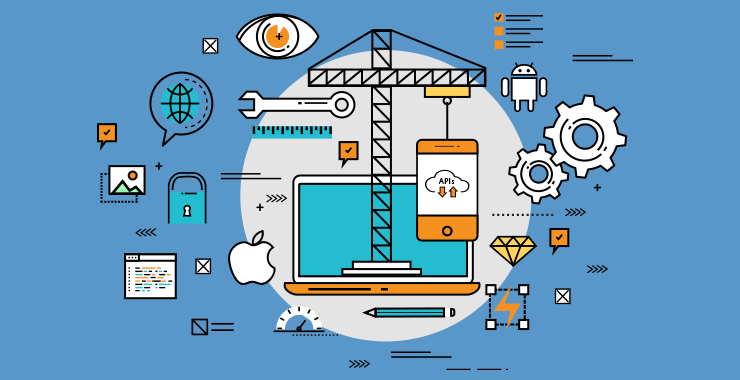
You might have come across the term ‘API’ while discussing mobile or web application development. In layman terms, APIs are the language through which applications speak to each other.
Today, APIs serve as a foundation in the app development process and allow companies to grow their businesses by using services provided by external firms.
What is an API?
API is an acronym for “application program interface.” It is a set of routines and protocols that enables access to another party’s application or platform.
An API is a software-to-software interface, through which the applications talk to each other without any user knowledge or intervention.
Let me explain you with an example: When you buy tickets through a movie ticket booking application on your smart phone, the application uses an API to send your credit card data to a 3rd party application for verification.
The remote application then retrieves that data, interprets it, verify your card details and sends it back to the application. The application then interprets that data and confirm your tickets.
What is a SDK?
A Software Development Kit (SDK) is a set of software development tools that allows creation of applications for a specific development platform and software framework. Both SDK and API are related to each other.
Technically speaking, APIs are a part of a SDK and executes tasks when a call is made. Going little deeper, an API is a part of a build that is used to feed information while a SDK is a set of tools used to build an application.
Increasing Importance of APIs:
APIs, if referred to as the one of the most important technologies behind mobile application development won’t be an overstatement.
The increasing importance of APIs can be attributed to their role in defining the way developers build their apps as well as the ease with which they integrate various web services into them.
App users today seek various services on the fly to perform multiple tasks and APIs are the ones that make this possible.
Advantage of using API
-
Saves Developer’s time
APIs can save considerable amount of time, as it eliminates the task of writing endless lines of code. There are pre-built APIs available from top web services which can be used to shorten the app development cycle and reduces the coding errors.
-
Convenient
Today many apps comes with the functionality of social media logins. Without creating a need to sign up for the app separately, users can directly sign-in through their Google or Facebook credentials.
This becomes extremely convenient for users as they need not create a different username. This is done through the integration of APIs provided by respective social media companies.
-
Ensures Faster development
Mobile apps today have a robust API backend which makes sure that the repetitive steps are eliminated by the using the existing web API services. By connecting the SDKs with the existing APIs, developers can get the app developed faster while ensuring high quality standards.
APIs eliminate the repetitive process, thus making sure the developer focuses more on core features of the app and help gain competitive advantage.
-
Help Automate App Testing
With the help of APIs, developers can automate the app testing process and save the time which otherwise would have consumed in manual testing process.
Test automation feature makes sure none of the bugs remain undetected and thus help developers deliver an app which stands high on both – quality and user expectations.
Widely Used APIs
- Facebook API: The Facebook API is used to access the login database of Facebook. It offers social plugins that display Facebook posts and “Like” buttons to your website. Facebook offers several APIs including Internationalization, Ads and Chat.
- Google Maps API: Google provide a set of Google Maps APIs that allows you to add maps feature in your mobile app. A user can use the app without leaving the app through JavaScript or Flash. You can various map functions such as embedding a Google Map, Static Map or Google Earth, adding Geocoding and Google Directions Functionality.
- YouTube API: YouTube provides several APIs that allows access to the engaging content on the platform. It allows developers to access the video analytics and channel data through two calls – REST and XML-RPC.
- Amazon Product Advertising API: The Amazon Product Advertising API give developers access to lots of Amazon data such as product listings, customer reviews, seller ratings as well product ads. Through Amazon’s Affiliate program, you can showcase product ads in the app and earn affiliate commission.
Conclusion
APIs serves as bridge for apps to interact with each other. By integrating popular APIs in your app, you can enhance the user experience and increase the popularity of your app. For developers, APIs help build apps faster by eliminating the need to code repetitively.
Mobile app development companies foresee the important role that APIs will play in creating a successful app and thus the importance of APIs in mobile app development will grow day by day.
We at TOPS Infosolutions use several API services in Mobile App Development to provide user-friendly, easily accessible apps for our clients.
For more information visit www.topsinfosolutions.com or drop us an email at contact@topsinfosolutions.com
Mobile App Development: Top 5 Things to Consider
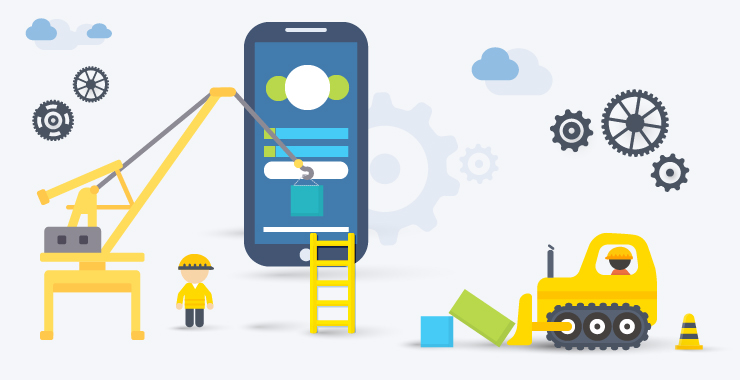
The popularity of enterprise and consumer based mobile app development is dominating the market since last decade. App Store and Play Store is flooded with millions of mobile apps covering countless industries; hence for the upcoming Appreneurs, it becomes difficult to stand tall and bolster their branding with mobile app.
Choosing the right mobile app development platform and keeping up with the best strategies is not the only thing that makes a mobile app successful. Mobile apps are deemed successful by various parameters such user engagement, UI/UX, etc. But, how does that happen?
Sustainable mobile apps are built by strategizing before laying the first brick of pillar. Helping you to march ahead, let’s dive in deep to make the decision right for your business.
5 App Development Trends To Expect In 2023
1. Target Audience
Before you invest in the mobile app development, do some research about the target audience. This will help you to get proper insight of the customer profile, preferences and what device they are using.
Moreover, put more focus on the geographical location of your target audience as platform varies widely by region. Identifying the target market in a right way plays a very crucial role while starting with your mobile app development process.
You can select the target audience by considering demographic factors such as education, age, socio-economic culture and occupation.
2. Native vs. Cross Platform vs. Hybrid:
Selecting the right platform for mobile app development leads to increased ROI, app retention and user-engagement. Before figuring out the best platform for your business, it is important to consider the user experience and user engagement;
the ideal platform is something that can offer optimized user experience and addresses the unique requirements for customer and business. You can consider the segments like user-friendliness, interactivity, reliability, responsiveness, app updates, customization and much more while selecting them.
#2.1 Native Mobile App:
Native mobile apps are developed in programming language which is native to the device & operating system and requires one specific app to create for one platform. To be precise, user can use the in-built features of the OS; for instance if camera support is needed in your app, developer can easily integrate app with camera.
#2.2. Cross-Platform Mobile App:
This refers to the mobile app development that is compatible with the single code base and can be used across multiple OS such – android, iOS, Windows. This enables the developers to reduce time to market, low development cost, code re-usability etc.
#2.3. Hybrid Mobile app:
Hybrid mobile app is also referred as cross-platform apps but renders the user-interface using embedded web browser, HTML, CSS and JavaScript. This helps with advancements and leads to reduced time in developing apps for individual platforms.
3. Development Cost
The cost of developing the mobile app largely depends on:
- Types of application
- Project complexities
- Resources required
- Technology Used
Moreover, application maintenance, upgrades and development efforts can vary significantly; it can be expensive and varies from vendor to vendor and there is always a hidden cost involved.
Open source tools can be an attractive option as it results into cost-saving but you need to spend hours in integrating them. Mobile app service provider can help in evaluating total cost analysis and estimate of the overall scope and timeline of the project.
4. App maintenance
Just because you published your mobile app, it doesn’t mean you are all set to earn profits. The world surrounding your app is constantly evolving and hence, your app also needs to upgrade from time to time.
If you want your app to sustain in the market, you always need to add enhanced features, test and host, deploy, and update UI/UX and much more.
Thousands of mobile apps are released each day; it is naïve to think that just because your app is wonderful, it will flourish. Be it on Android, iOS or Windows, there are many crucial things that you need to maintain your mobile app for long-term. You will need to
- Extend the features and functionalities of your app iteratively
- Enhance it on various grounds like performance, app store listings, user behavior and so on
- Keeping up with the latest UI/UX app trends
- Mobile app analytics for data driven improvements
- Providing quick bug fixes and security patches
5. Security
Opting for the mobile app development frameworks unofficially, exposes you to certain degree of risk as you are using layers of abstraction on decided platform and the coding language which is operating on it.
Additionally, you must make note of norms of industry standards, system monitoring and data encryption capabilities when building mobile app.
In-case, if you are using cloud services, you need to make sure that it complies with the rules-regulations and standard norms. Although it may sound easier to engage in cross-platform mobile app development, but getting highest level of security can be bit difficult.
If all the above points are taken into consideration, it can ensure a successful end product. TOPS Infosolutions’ team of developers makes sure to concentrate on all the above points and ensures your business growth while taking care of all technical requirements.
If you have got an app idea; it’s time to convert your idea into reality. Connect with us today!






